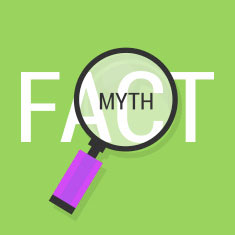A Small Muscle with Big Impact
Key Messages
- There is strong evidence supporting conservative management of pelvic floor disorders
- Australia has post graduate qualifications specific to continence & pelvic floor rehabilitation
- Only about 20% of WMHP patients have recently given birth
- Pelvic floor patients are both men & women, from young teenagers to the elderly
- A patient’s motivation & adherence to a pelvic floor program leads to a positive outcome
When I first graduated from Physio I never imagined I would spend my career rehabilitating one small internal muscle and that it could be so interesting and rewarding! Pelvic floor disorders can impact social and physical activities, intimate relationships and workforce participation, leaving sufferers isolated, embarrassed and lacking confidence. Together we can help them.
Physiotherapy has come a long way in the last 2 decades. We now have strong evidence supporting conservative management of pelvic floor disorders and are fortunate in Australia to have gold standard post graduate qualifications specific to continence and pelvic floor rehabilitation. There is increasing community and health professional recognition that Physio’s must attain this qualification and engage in ongoing professional development to ensure they treat pelvic floor disorders effectively and safely.
There are many people who have never heard of pelvic floor physiotherapy and have misconceptions about the pelvic floor and our profession. Below we share some common myths and facts.
Myth – The only people who need to see a pelvic floor physio are women after childbirth
Interestingly, only about 20% of our patients have recently given birth. The other 80% are men and women from young (teenagers with pelvic pain) to old (our oldest being 93)! Our patients experience a variety of symptoms such as urinary stress incontinence, urinary frequency, urgency and urge incontinence, overactive bladder, faecal incontinence, constipation and obstructed defecation, and pelvic and sexual pain. We also see men and women prior to or after having pelvic surgery.
Myth – You can learn to do pelvic floor exercises from a brochure or on line
We regularly see patients who have done pelvic floor exercises, learnt from a brochure or the internet, but without success. This is worse than no help because patients are left thinking pelvic floor exercises (PFE) don’t help. There are many reasons why self-prescription of PFE doesn’t help. We know that up to 50% of women and 30% of men can’t correctly contract their pelvic floor muscles without specific instruction. Research demonstrates that the exercise program must be based on a thorough assessment and be specific to the patient’s pelvic floor muscle function and their symptoms. Not all patients are weak, some may have an overactive pelvic floor muscle. They may need to focus on strengthening or alternatively downtraining and the program must be modified based on progress and their functional goals.
Fact – Patients are in the driver’s seat to influence
their outcome
In a study published in the journal of the International Continence Society (ICS) over a decade ago, researchers looked at factors predicting positive outcome with pelvic floor muscle training. Surprisingly, factors such as severity and duration of symptoms and past medical and surgical history were not found to be predictors. The only factor consistently associated with a patient achieving their goals was the patient’s motivation and adherence. Psychological, lifestyle, internal and external factors can all influence and impact motivation and adherence and each patient possesses a unique combination of these. Thanks to research published by an ISC working party in 2015 we now understand how to facilitate adherence enablers and reduce adherence barriers for patients undergoing pelvic floor muscle training. We understand it’s as much a behavioural therapy as it’s a physical therapy.
Fact – A pelvic health program is more than just pelvic floor exercises
Pelvic floor disorders are complex and multi-factorial. Rehabilitation involves restoration of function of the muscular support in and around the pelvis. It also involves education, modification of risk factors and general exercise, dietary and fluid intake advice, and bladder and bowel re-training. Each program should be individualised to match the patient’s unique goals.
It’s amazing how a small muscle can have such a big impact and so many myths surrounding it. Let’s work together to debunk the myths and promote the facts regarding pelvic floor physiotherapy and personalised pelvic health programs.
Shan Morrison
Director
Women’s & Men’s Health Physiotherapy
July 2016





